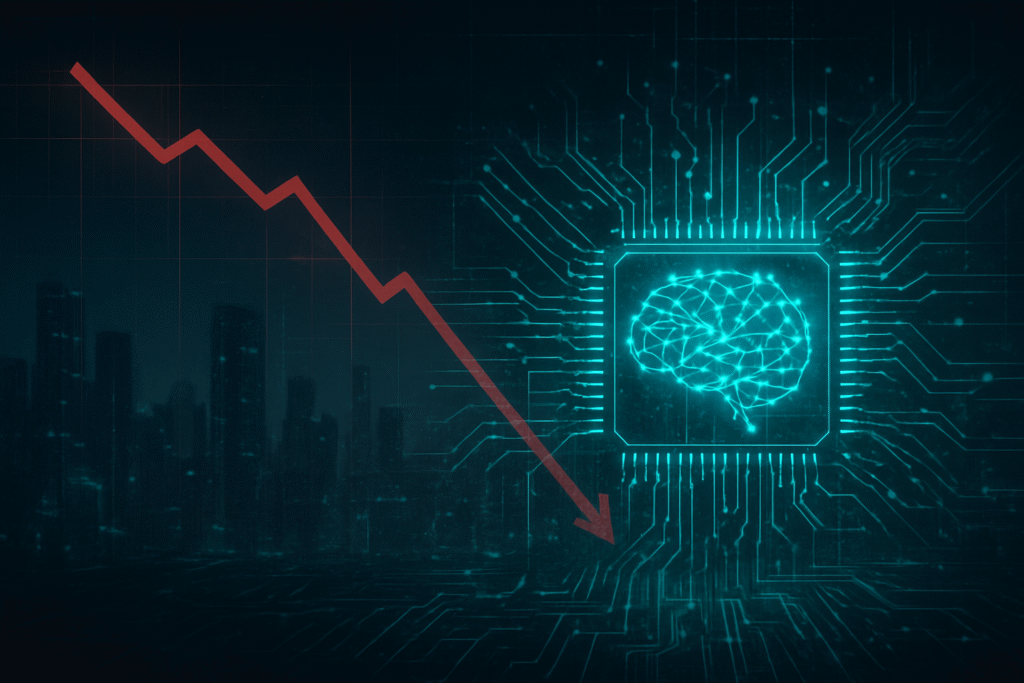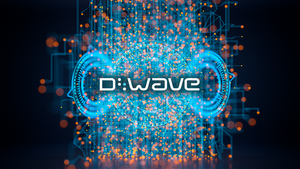
The technology sector, a beacon of growth for much of the past decade, is currently navigating a turbulent downturn, significantly impacting market valuations and investor sentiment. This recent slump, particularly pronounced in mid-November 2025, is primarily driven by a confluence of macroeconomic factors, most notably the fading hopes for imminent Federal Reserve interest rate cuts. As the prospect of cheaper capital recedes, high-growth tech companies, including those at the forefront of artificial intelligence (AI), are facing heightened scrutiny, leading to a substantial reevaluation of their lofty valuations and sparking concerns about the sustainability of the AI boom.
This market recalibration underscores a broader shift in investor behavior, moving away from a "growth at all costs" mentality towards a demand for demonstrable profitability and sustainable business models. While the long-term transformative potential of AI remains undisputed, the immediate future sees a more cautious approach to investment, forcing companies to prioritize efficiency and clear returns on investment amidst persistent inflation and a general "risk-off" sentiment.
Macroeconomic Headwinds and the Tech Reckoning
The immediate trigger for the tech stock downturn is the significant reduction in investor expectations for a near-term Federal Reserve interest rate cut. Initial market predictions for a quarter-point rate cut by December 2025 have plummeted, with some Fed officials indicating that inflation remains too persistent to justify immediate monetary easing. This shift implies that borrowing costs will remain higher for longer, directly impacting growth-oriented tech companies that often rely on cheaper capital for expansion and innovation.
Persistent inflation, showing fresh estimates of core prices rising another 0.3% in October 2025, continues to be a key concern for the Federal Reserve, reinforcing its hawkish stance. Higher Treasury yields, a direct consequence of fading rate-cut hopes, are also luring investors away from riskier assets like tech stocks. This environment has fostered a broader "risk-off" sentiment, prompting a shift towards more defensive sectors. The market has also grown wary of stretched valuations in the AI sector, with some analysts suggesting that too much optimism has already been priced in. In just two days in mid-November 2025, the US stock market witnessed tech giants losing an estimated $1.5 trillion in value, with significant declines across the Nasdaq, S&P 500, and Dow Jones Industrial Average. Companies like Nvidia (NASDAQ: NVDA), Microsoft (NASDAQ: MSFT), and Palantir (NYSE: PLTR), despite strong earnings, experienced sharp pullbacks, signaling a market demanding more than just promising AI narratives.
Semiconductors in the Crosshairs: AI's Dual-Edged Sword
The semiconductor industry, the foundational bedrock of AI and modern technology, finds itself in a complex position amidst this economic turbulence. While the sector experienced a challenging 2023 due to reduced demand and oversupply, a robust recovery driven by artificial intelligence has been evident in 2024, yet with continued volatility. Macroeconomic headwinds, such as high interest rates and weakening consumer confidence, historically lead to decreased consumer spending and delayed purchases of electronic devices, directly impacting chip demand.
Stock performance of key semiconductor companies reflects this duality. While some, like Taiwan Semiconductor Manufacturing Co. (NYSE: TSM), Micron Technology (NASDAQ: MU), Broadcom (NASDAQ: AVGO), Advanced Micro Devices (NASDAQ: AMD), and Intel (NASDAQ: INTC), have shown strong gains driven by the insatiable demand for AI chips, others have faced renewed pressure. For instance, an announcement from CoreWeave Inc. regarding a data center delay led to a downgrade by JPMorgan Chase (NYSE: JPM), impacting chipmakers like ARM Holdings (NASDAQ: ARM) and Lam Research (NASDAQ: LRCX). Nvidia, despite its dominant position, also saw its shares fall due to broader market sell-offs and valuation concerns.
Demand trends reveal a strong recovery for the memory market, projected to grow by 66.3% in 2024, largely fueled by Generative AI (GenAI). This sector is a major tailwind, driving skyrocketing demand for high-performance Graphics Processing Units (GPUs) and accelerator cards in data centers. The global semiconductor market size is projected to grow from $529 billion in 2023 to $617 billion by 2024, an annual growth of 16.6%. However, supply chain implications remain a concern, with ongoing geopolitical tensions, such as US export bans on certain chips to China, and lingering tariffs affecting production and potentially leading to annual losses for equipment suppliers. Governments worldwide, including the US with the CHIPS and Science Act, are actively promoting domestic manufacturing to build more resilient supply chains, though talent shortages persist.
AI Companies at a Crossroads: Consolidation and Scrutiny
The tech stock downturn and macroeconomic pressures are significantly reshaping the landscape for AI companies, impacting their pursuit of technological breakthroughs, competitive dynamics, and potential for disruption. The era of "growth at all costs" is giving way to heightened scrutiny, with investors demanding tangible returns and demonstrable profitability. This leads to increased pressure on funding, with capital deployment slowing and experimental AI projects being put on hold.
Major tech companies like Microsoft (NASDAQ: MSFT), Alphabet (NASDAQ: GOOGL), and Amazon (NASDAQ: AMZN) have invested hundreds of billions into AI infrastructure since 2023, straining their balance sheets. Even these giants have seen stock prices impacted by investor intolerance for AI spending that hasn't yet translated into meaningful profits. Startups and independent AI vendors, such as DataRobot and the now-defunct Argo AI, have experienced layoffs, highlighting the vulnerability of less diversified firms.
However, certain entities stand to benefit. Established tech giants with strong cash reserves and diversified businesses, like Microsoft and Google, can absorb immense AI infrastructure costs. AI infrastructure providers, primarily Nvidia, are uniquely positioned due to the ongoing demand for their GPUs and long-term client contracts. Cloud service providers, such as Oracle (NYSE: ORCL), also benefit from the increased demand for computing resources. Crucially, investors are now gravitating towards AI companies with demonstrable ROI, clear differentiation, and proven traction, suggesting a flight to quality. Competitive dynamics indicate strategic consolidation, with stronger companies potentially acquiring smaller, struggling AI firms. There's also a shift in investor metrics, evaluating Big Tech using "hardware-like metrics" such as AI customer adoption and contract backlogs, rather than traditional software-centric measures.
The Broader AI Landscape: Bubble or Breakthrough?
The current tech stock downturn and macroeconomic climate are prompting a crucial re-evaluation within the broader AI landscape. Concerns about an "AI bubble" are rampant, drawing parallels to the dot-com era. Critics point to abnormally high returns, speculative valuations, and instances of "circular financing" among major AI players. Experts from institutions like Yale and Brookings have warned of overvaluations and the risk of a market correction that could lead to significant wealth loss.
However, many analysts argue that the current AI boom differs fundamentally from the dot-com bubble. Today's leading AI companies are generally established, profitable entities with diverse revenue streams and tangible earnings, unlike many unprofitable dot-com startups. AI is already deeply integrated across various industries, with real demand for accelerated computing for AI continuing to outstrip supply, driven by the intensive computational needs of generative AI and agentic AI. The pace of innovation is exceptionally fast, and while valuations are high, they are often backed by growth prospects and earnings, not reaching the "absurdity" seen in the dot-com era.
Beyond market dynamics, ethical considerations remain paramount. Bias and fairness in AI algorithms, transparency and explainability of "black box" systems, privacy concerns, and the environmental impact of energy-intensive AI are all critical challenges. Societal impacts include potential job displacement, exacerbation of economic inequality if benefits are unevenly distributed, and the risk of misinformation and social manipulation. Conversely, AI promises enhanced productivity, improved healthcare, optimized infrastructure, and assistance in addressing global challenges. The current economic climate might amplify these concerns if companies prioritize cost-cutting over responsible AI development.
AI's Horizon: Resilience Amidst Uncertainty
Looking ahead, the future of AI, while subject to current economic pressures, is expected to remain one of profound transformation and growth. In the near term, companies will prioritize AI projects with clear, immediate returns on investment, focusing on efficiency and cost optimization through automation. Investment in core AI infrastructure, such as advanced chips and data centers, will likely continue to boom, driven by the race for Artificial General Intelligence (AGI). However, there's a potential for short-term job displacement, particularly in entry-level white-collar roles, as AI streamlines operations.
Long-term projections remain highly optimistic. Generative AI alone is projected to add trillions annually to the global economy and could enable significant labor productivity growth through 2040. AI is expected to lead to a permanent increase in overall economic activity, with companies investing in transformative AI capabilities during downturns poised to capture significant growth in subsequent recoveries. AI will increasingly augment human capabilities, allowing workers to focus on higher-value activities.
Potential applications span adaptive automation, data-driven decision-making for market trends and risk management, hyper-personalization in customer experiences, and innovation in content creation. AI is also proving more accurate in economic forecasting than traditional methods. However, significant challenges persist: managing job displacement, ensuring ethical AI development (fairness, transparency, privacy), demonstrating clear ROI, addressing data scarcity for training models, and mitigating the immense energy consumption of AI. The risk of speculative bubbles and the crucial need for robust governance and regulatory frameworks are also top concerns.
Experts generally predict a positive economic impact from AI, viewing it as a critical business driver that will primarily augment human capabilities rather than fully replace them. They emphasize human-AI collaboration for optimal outcomes, especially in complex areas like economic forecasting. Despite economic headwinds, the pace of AI innovation and adoption is expected to continue, particularly for solutions offering concrete and quantifiable value.
Navigating the New AI Economy
The recent tech stock downturn, intertwined with broader macroeconomic factors and fading Fed rate-cut hopes, marks a significant recalibration for the AI industry. It underscores a shift from speculative exuberance to a demand for tangible value and sustainable growth. While concerns about an "AI bubble" are valid, the underlying fundamentals of AI—its pervasive integration, real-world demand, and transformative potential—suggest a more resilient trajectory than past tech booms.
The key takeaways are clear: investors are now prioritizing profitability and proven business models, forcing AI companies to demonstrate clear returns on investment. The semiconductor industry, while facing some volatility, remains a critical enabler, with AI-driven demand fueling significant growth. Ethical considerations, societal impacts, and the need for robust governance frameworks are more pressing than ever.
In the coming weeks and months, watch for how major tech companies adjust their AI investment strategies, the performance of AI infrastructure providers, and the emergence of AI solutions that offer clear, quantifiable business value. The current economic climate, though challenging, may ultimately forge a more mature, resilient, and impactful AI ecosystem, solidifying its place as a foundational technology for decades to come.
This content is intended for informational purposes only and represents analysis of current AI developments.
TokenRing AI delivers enterprise-grade solutions for multi-agent AI workflow orchestration, AI-powered development tools, and seamless remote collaboration platforms.
For more information, visit https://www.tokenring.ai/.






